Interfaces
One of the key elements to ensuring flight worthiness of the Half Cat standard liquid rocket design is the manner in which the components are reliably and securely mated together. The first structural interface is between the propellant tank and the combustion chamber: These two are connected by a rigid external thrust structure, typically a set of aluminum angle brackets on which the fins are attached. The structure uses 2x2 attachment, where both ends are connected at two points. This makes alignment of the tank and chamber a non-issue because neither end can freely rotate. Note in the figure below how both tank and chamber are fastened to the angle brackets with two screws – all degrees of freedom are fixed, thus, assuming the brackets are straight, both components are held in-line with each other without requiring precise hole tolerances.
2x2 attachment between thrust chamber assembly and propellant tank, with attached fins (valves and plumbing omitted)
The thrust structure, externally bolted-on, can be easily removed and replaced if required. The angle brackets also provide a mounting point for fins, which can likewise be easily removed and replaced. Note in Fig. 1.4 how a fin can be unobtrusively attached to the angle bracket. Fins can be rapidly swapped out for a different design, or a backup spare in case of damage. One other benefit to this type of design (exoskeletal) is that it leaves plenty of unobstructed volume for components inside the plumbing section, whereas a structure within the rather limited circular cross section of the propellant tank (endoskeletal) can be excessively difficult to work around.
The second critical interface is between the propellant tank and the airframe at the forward end of the rocket. Clean airframe mating is the idea that the rest of a high-power rocket, which includes body tubes, nose cone, electronics bay, and recovery system, can be cleanly mounted to the front of the liquid propulsion system without the need for additional structural components between the two. In the standard design, the forward retaining ring of the propellant tank typically extends from the tank casing and includes fastener holes to attach an airframe tube.
Clean airframe mating between fuel tank bulkhead and lower airframe tube, including recovery bulkhead for shock cord attachment (fuel valve and plumbing omitted)
A recovery bulkhead with a U-bolt is connected to the forward tank bulkhead by two threaded rods. The rods may interface with the tank bulkhead in one of two ways: directly, by threading into blind holes in a sufficiently thick bulkhead, or indirectly, by using coupling nuts with screws that pass through the tank bulkhead and are sealed to prevent fuel leakage. The latter method is shown in the figure above. Shock cord can be anchored to the U-bolt to transfer load from the parachutes, and the airframe is easily removed for servicing with the recovery bulkhead remaining attached to the tank assembly.
In essence, the standard liquid rocket can be thought of as an independent propulsion system attached to a high-power rocket airframe and recovery system. With only slight modification, most high-power rocket airframes can be converted to for use with a liquid bipropellant motor using this method.
HCR-1100 standard for amateur liquid rocket interfaces
The Thrust Chamber Assembly shall be connected to the Propellant Tank by a Thrust Structure composed of no fewer than three rigid members, fabricated from aluminum angle, T-bar, square or rectangular tube, U-channel, or similar extruded profile.
Each member of the Thrust Structure must be fastened to both the Propellant Tank and Thrust Chamber Assembly at two locations (four total locations), which are separated by a minimum of one half of the outside diameter of the tank. Fasteners which apply axial preload shall be used for these connections, such as screws/bolts (recommended) or rivets; pins shall not be used.
The Thrust Structure may be fastened directly to the outer diameter of the Propellant Tank and Thrust Chamber Assembly, or may use intermediate brackets or spacers to provide coplanar mating surfaces between components of different diameters.
Fins shall be fastened to the rigid members comprising the Thrust Structure by screws/bolts (recommended) or rivets.
The Airframe shall interface to the forward end of the tank assembly by sliding over the interface ring and/or a portion of the Propellant Tank itself. The Airframe shall be fastened to the tank assembly by no fewer than three radial fasteners, which thread into the interface ring or nuts installed against the inner diameter thereof (recommended).
The Recovery Harness and/or any components in the primary load path of parachute deployment shock shall be anchored either directly or indirectly to the forward Propellant Tank bulkhead by means of fasteners that are either threaded into or pass through the bulkhead, without permitting leakage of propellant. The Recovery Harness and/or any components in the primary load path of parachute deployment shock shall not be anchored solely to the Airframe, and shall not be anchored solely or primarily with adhesive.


